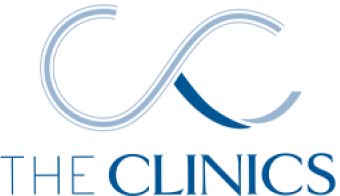
Brachioplasty (Arm Lift)
Arm lift surgery, medically called brachioplasty, is a type of cosmetic surgery designed for arm reshaping and excess arm skin removal.

What is an Arm Lift?
Arm lift surgery, medically called brachioplasty, is a type of cosmetic surgery designed for arm reshaping and excess arm skin removal. The procedure involves making incisions on the inner or back of the upper arms to remove excess skin and fat. The remaining skin is then pulled taut to achieve arm skin tightening and flabby arm reduction. Arm liposuction may also be performed during surgery.
Why Have an Arm Lift?
This type of arm cosmetic surgery is sought by individuals of all ages who are unhappy with the appearance of their arms, and may choose to undergo arm rejuvenation and arm fat removal for the following reasons:
Skin sagging: Factors such as significant weight loss, aging and sun exposure can cause the skin on the upper arms to lose elasticity and become saggy.
Excess fat: The aging process, genetics and weight fluctuations can cause excess fat deposits to accumulate around the upper arms that are resistant to diet and exercise.
Arm sculpting: Individuals who want their arms to look more toned and athletic may choose to have an arm lift to improve their upper arm contours.
FAQ’s
What kind of arm lift results can I expect?
Brachioplasty can give your arms a more toned and youthful appearance. The degree of your individual improvement will depend on the amount of excess skin and fat, and the technique used to correct it.
Can I combine an arm lift with other procedures?
Yes, an arm lift can complement other procedures such as a breast reduction or lift, or as part of a more comprehensive body contouring surgery.
We invite you to book a consultation with one of our expert plastic surgeons to find out if brachioplasty is right for you.

Arm Lift Quick Facts:
| Cost of Arm Lift | TBD |
|---|---|
| Duration of Surgery | 2-4 hours |
| Hospital Stay Required? | No |
| Stitches Removed | 5-7 days |
| Days of Social Downtime | 2-3 weeks |

After Surgery:
Downtime and recovery: Each person experiences their arm lift or brachioplasty recovery differently. Below are some general guidelines for what you can expect:
1 Day Post-Op: It’s normal to experience some pain, swelling, and bruising at the surgical site. Your surgeon will prescribe pain medications and provide guidelines for wound care. Follow these instructions carefully. You’ll likely wake up from surgery wearing compression garments. Wear them as directed to minimize swelling and support the healing process.
1 Week Post-Op: Swelling and bruising will gradually start to subside. Continue taking pain medication as necessary. If non-dissolvable sutures were used, they will be removed during your follow-up appointment in 5-7 days.
The range of motion in your arms may be limited so it’s important to avoid strenuous activity such as heavy lifting. Maintain a healthy, nutrient-rich diet and stay hydrated to help with the healing process.
2-3 Weeks Post-Op: Continue wearing your compression garments or sleeves to provide support to the surgical area. Your surgeon will advise you when you can stop wearing the compression garments.
Your surgeon may recommend a scar management strategy at this time. This may include the application of scar creams, gels or silicone sheets. Remember to protect the incisions from sun exposure to prevent hyperpigmentation of your scars.
Long-term recovery:
Your complete healing process after an arm lift can take several weeks to months. Your scars will be very visible at first but their appearance will improve over time. If you have any concerns or unusual symptoms, such as prolonged swelling or redness, contact your surgeon right away.
What to Expect Before Surgery:
Follow pre-operative instructions: You will be provided with detailed pre-operative instructions by your surgeon. These may include avoiding medications that promote bleeding, making sure you have all the medications you’ll need post-operatively. Most arm lift surgeries are performed under general anesthesia, so you should be prepared to stop eating and drinking the night before.
Arrange for help: You will need someone to pick you up from the clinic or hospital and take you home. Having someone nearby to help you with basic tasks and medications for the first few days following surgery is recommended.
Plan for your recovery: Downtime may take a few days to several weeks. Make sure to take adequate time off work as necessary. Make any necessary adjustments to your home to ensure a comfortable and safe recovery.
How to Prepare for an Arm Lift

Do your research
A consultation and medical evaluation with a qualified Plastic Surgeon is the first step in preparing for your arm lift surgery. During your initial meeting you can learn more about the procedure and discuss your specific objectives. Your surgeon will personalize your treatment plan (type of brachioplasty ie. full or mini, incision placement, and other details).

Quit smoking
If you’re a smoker it’s best to quit smoking at least six weeks in advance. Nicotine and other chemicals in tobacco can constrict blood vessels and impair your body’s ability to heal adequately post surgery.
ELEGIBILITY The Ideal Candidate for an Arm Lift
An ideal candidate for an arm lift is someone who has specific concerns about the appearance of their upper arms. These can include sagging skin due to aging or weight loss, lumpy skin as a result of uneven fat deposits, or a combination of loose skin and fat often referred to as “batwing arms.” Here are some other factors to consider:
Good overall health: A person should be in excellent health and a non-smoker. This includes having no serious physical conditions that could affect the outcome or be a contraindication to surgery and general anesthesia.
Stable weight: It is generally recommended that candidates be at their ideal weight before considering arm lift surgery. Weight fluctuations post-surgery can impact long-term results.
Have realistic expectations: It’s important to have a clear understanding of what can and cannot be achieved with an arm lift. While surgery can result in sagging arm correction and upper arm contouring, there will be visible scars that can take many months to fade.
Be committed to recovery: Candidates should be emotionally and mentally prepared for the brachioplasty procedure, as well as understand the recovery process and potential risks.




